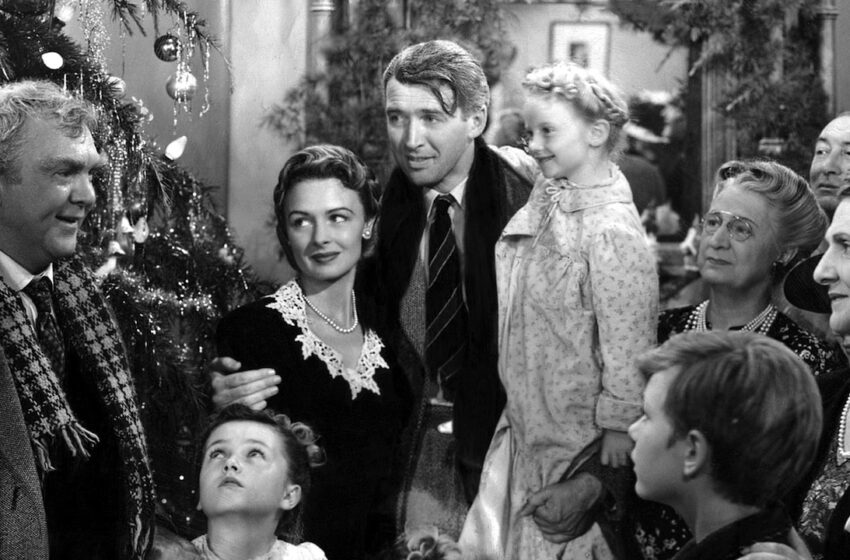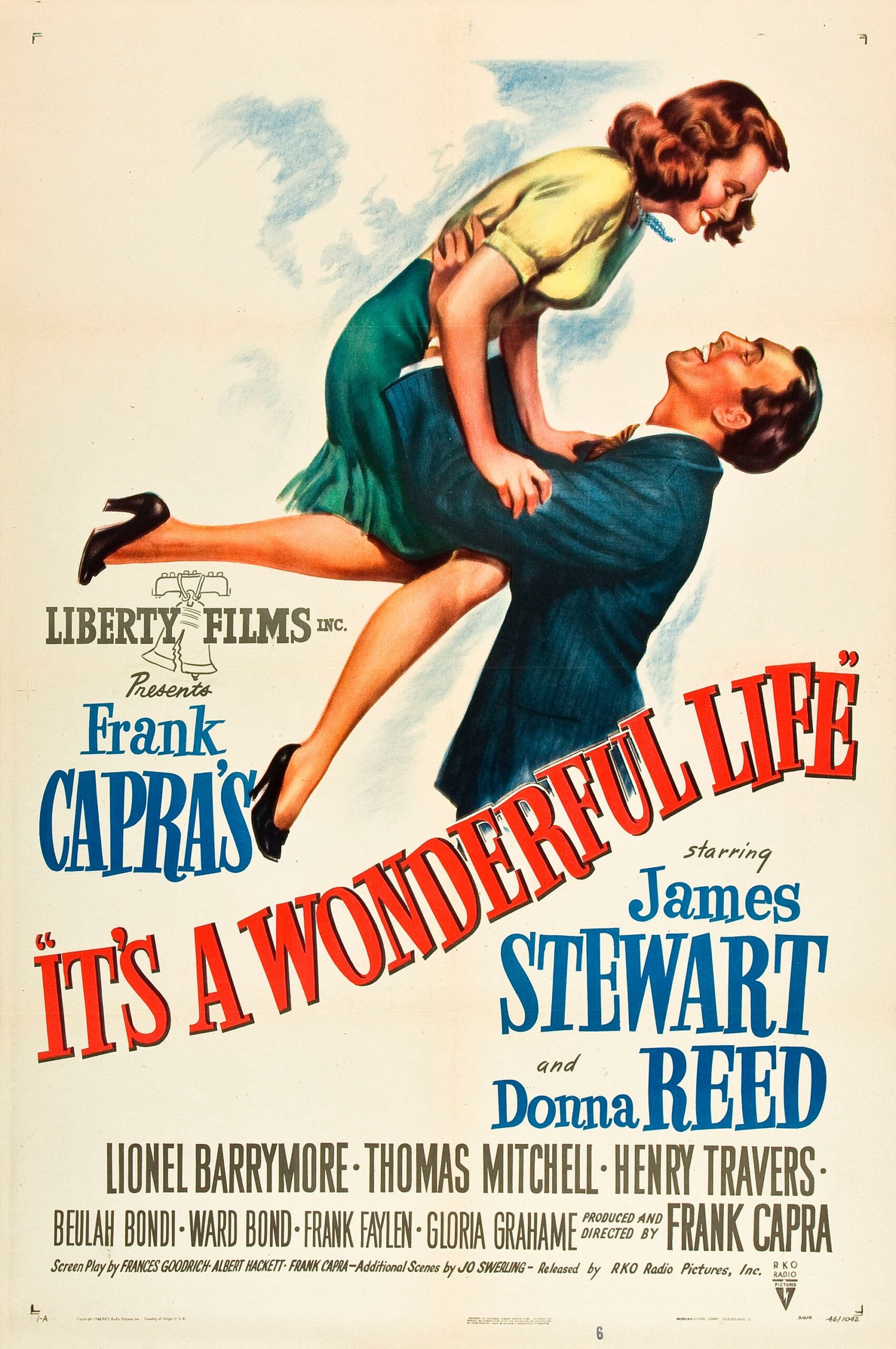
It’s a Wonderful Life (1946) – Film Review

“It’s a Wonderful Life,” directed by Frank Capra in 1946, has long been heralded as a quintessential Christmas classic, cherished by generations for its heartwarming narrative and Jimmy Stewart’s charismatic performance. However, peeling back the layers of holiday cheer reveals a film steeped in post-war anxiety, subtle cynicism, and a touch of existential dread, all wrapped in a bow of Hollywood idealism.
Narrative: The American Dream in a Snow Globe
At its core, “It’s a Wonderful Life” is a tale of the American Dream, deferred and distorted through the eyes of George Bailey (Jimmy Stewart). George’s ambitions to leave the small town of Bedford Falls and achieve great things are continually thwarted by his sense of duty to his family and community. The film presents an intricate weave of small-town nostalgia and a haunting portrayal of a man on the brink of despair.
The narrative arc takes us through George’s life, his sacrifices, and ultimately to that fateful Christmas Eve when, overwhelmed by financial ruin and existential crisis, he contemplates suicide. The intervention of Clarence, his guardian angel, serves as a narrative device to explore the theme that every life has value, no matter how ordinary it may seem.
Behind the Scenes: The Making of a Classic
Produced just after World War II, “It’s a Wonderful Life” reflects the era’s optimism and its underlying anxieties. The film’s production was not without its challenges. Originally developed from a short story titled “The Greatest Gift” by Philip Van Doren Stern, the script underwent several revisions before it became the story we know today.
One of the most notable aspects of the film’s production was the innovative use of a new type of artificial snow. Prior to “It’s a Wonderful Life,” filmmakers often used painted cornflakes for snow scenes, but Capra wanted to avoid the crunching noise this created. The solution was a mix of foamite (used in fire extinguishers), sugar, water, and soap flakes, which created the silent, fluffy snow that blankets much of the film’s setting.
Performances: Stewart and Reed in the Spotlight
Jimmy Stewart’s portrayal of George Bailey is arguably one of his finest roles. He brings a depth of emotion and authenticity to the character that resonates with the viewer’s own hopes and fears. Donna Reed’s performance as Mary Hatch, George’s steadfast wife, is equally compelling, providing a strong yet gentle counterbalance to George’s often tumultuous character.
Themes: Existential Undercurrents in a Capraesque Stream
Capra’s film delves into themes that are darker than they first appear. There’s an underlying cynicism in George Bailey’s journey – a sense that personal sacrifice doesn’t always lead to personal fulfillment. The film’s portrayal of Potter, the malevolent banker, underscores a critique of unchecked capitalism and the danger of losing one’s humanity in the pursuit of wealth.
Moreover, the film grapples with existential questions about the value of one’s life and the impact one person can have on their community. Clarence’s intervention serves to illuminate the unseen ripples each life creates, offering a counterpoint to the film’s darker tones.
Cultural Impact and Legacy
Upon its release, “It’s a Wonderful Life” received mixed reviews and was initially a box office disappointment, only gaining its classic status in the following decades. The film has since become a staple of holiday cinema, renowned for its uplifting message and emotional depth.
Final Thoughts
In essence, “It’s a Wonderful Life” is a film that transcends the holiday genre, offering viewers a complex tapestry of joy, despair, and redemption. While it wraps its narrative in the warm glow of holiday cheer, there’s an undercurrent of grit and realism that speaks to the struggles of the everyman. Its portrayal of life’s trials and triumphs, coupled with Capra’s signature optimistic touch, ensures that the film remains a beloved, if slightly idealistic, portrayal of the human experience.




